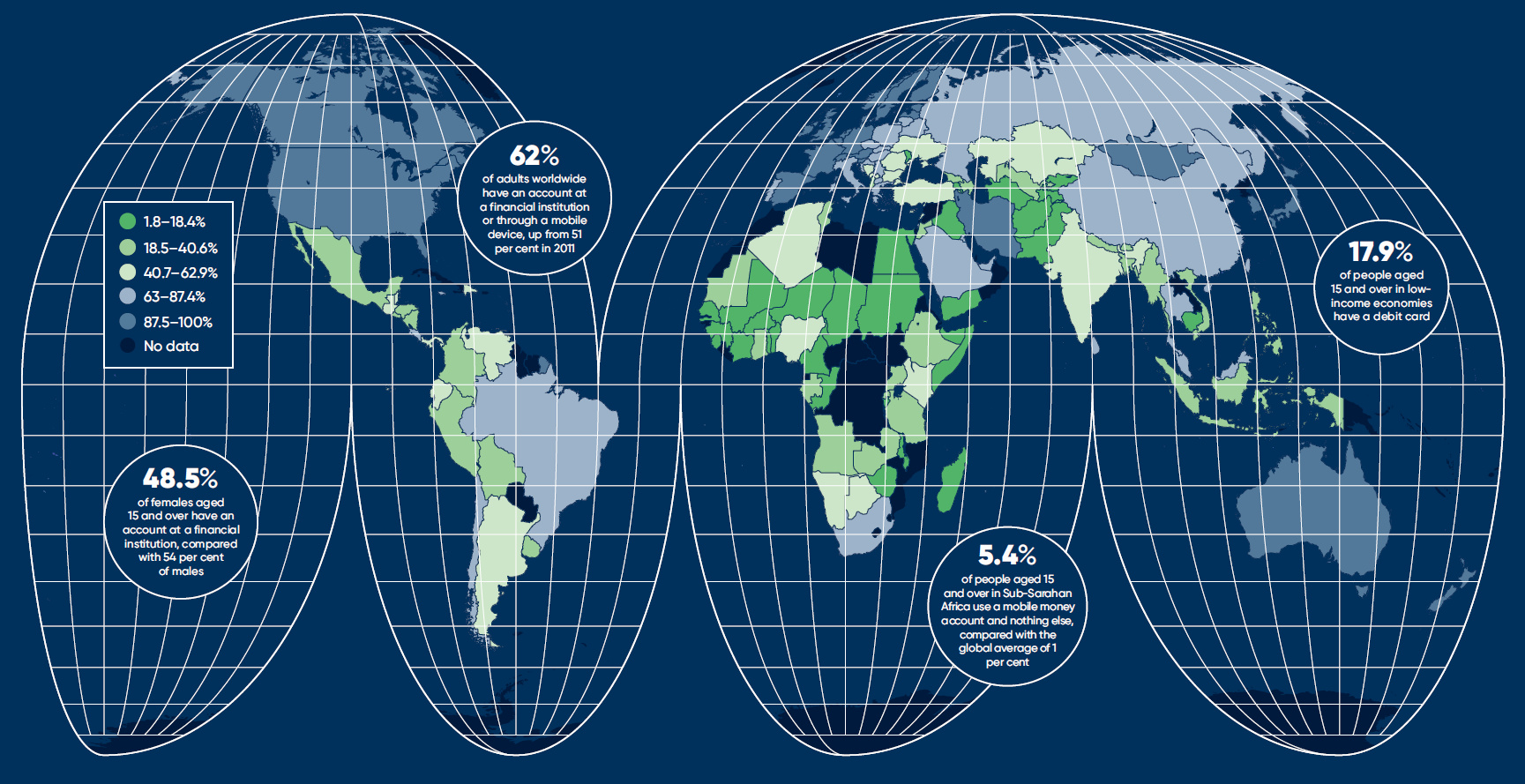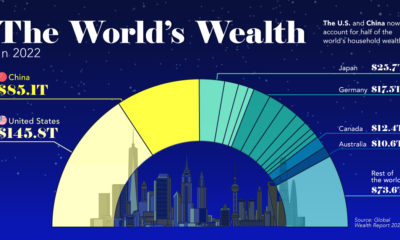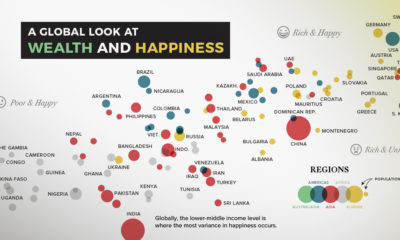For those of us living in North America or Europe, we generally take the near-universal access we have to financial services for granted. Sure, there are many people that have questions or concerns about the way central banks and currencies operate, but even the most skeptical of these people likely keep some money in a bank or investment account. It’s convenient, easy, and it facilitates other economic transactions. But, there are billions of people in the world that do not have such an opportunity. This “unbanked” population pays for rent and goods in cash, and they usually don’t have easy access to things like a bank account, insurance, investments, or pensions.
Where are the Unbanked?
The World Bank has data from 160 countries on this subject, and it’s clear that there are some pretty significant holes that can be filled – either by financial institutions, or fintech companies – that are willing to take the chance. Most of the world’s unbanked population lives in highly rural, undeveloped areas such as sub-Saharan Africa and Central Asia. In countries in these regions, such as Turkmenistan (where only 1.8% have bank accounts) or Niger (3.5% have accounts), banking is largely unknown to the masses.
A Multi-Billion Dollar Opportunity
But is an unbanked country like Turkmenistan where the opportunity lies? Not really, because it only has five million people, close to 60% unemployment, and a particularly repressive regime. It’s a lot of risk to take on for an extremely low payoff. However, emerging economies in the Asia-Pacific and Latin America/Caribbean seem like a much safer potential bet for would-be providers. While smaller proportions of their populations lack access to basic financial services, their higher overall populations and income levels make them a more feasible choice. In the Asia-Pacific, the World Bank sees increased banking penetration as a $79 billion opportunity for personal banking of individuals with under $8k in annual income. Likewise, it sees a $95 billion opportunity in micro and small business banking in the region. For Latin America and the Caribbean, the opportunity is similar: $34 billion for personal banking (less than $8k income) and $81 billion for micro and small banking business. on These are in the form of Treasury securities, some of the most liquid assets worldwide. Central banks use them for foreign exchange reserves and private investors flock to them during flights to safety thanks to their perceived low default risk. Beyond these reasons, foreign investors may buy Treasuries as a store of value. They are often used as collateral during certain international trade transactions, or countries can use them to help manage exchange rate policy. For example, countries may buy Treasuries to protect their currency’s exchange rate from speculation. In the above graphic, we show the foreign holders of the U.S. national debt using data from the U.S. Department of the Treasury.
Top Foreign Holders of U.S. Debt
With $1.1 trillion in Treasury holdings, Japan is the largest foreign holder of U.S. debt. Japan surpassed China as the top holder in 2019 as China shed over $250 billion, or 30% of its holdings in four years. This bond offloading by China is the one way the country can manage the yuan’s exchange rate. This is because if it sells dollars, it can buy the yuan when the currency falls. At the same time, China doesn’t solely use the dollar to manage its currency—it now uses a basket of currencies. Here are the countries that hold the most U.S. debt: As the above table shows, the United Kingdom is the third highest holder, at over $655 billion in Treasuries. Across Europe, 13 countries are notable holders of these securities, the highest in any region, followed by Asia-Pacific at 11 different holders. A handful of small nations own a surprising amount of U.S. debt. With a population of 70,000, the Cayman Islands own a towering amount of Treasury bonds to the tune of $284 billion. There are more hedge funds domiciled in the Cayman Islands per capita than any other nation worldwide. In fact, the four smallest nations in the visualization above—Cayman Islands, Bermuda, Bahamas, and Luxembourg—have a combined population of just 1.2 million people, but own a staggering $741 billion in Treasuries.
Interest Rates and Treasury Market Dynamics
Over 2022, foreign demand for Treasuries sank 6% as higher interest rates and a strong U.S. dollar made owning these bonds less profitable. This is because rising interest rates on U.S. debt makes the present value of their future income payments lower. Meanwhile, their prices also fall. As the chart below shows, this drop in demand is a sharp reversal from 2018-2020, when demand jumped as interest rates hovered at historic lows. A similar trend took place in the decade after the 2008-09 financial crisis when U.S. debt holdings effectively tripled from $2 to $6 trillion.
Driving this trend was China’s rapid purchase of Treasuries, which ballooned from $100 billion in 2002 to a peak of $1.3 trillion in 2013. As the country’s exports and output expanded, it sold yuan and bought dollars to help alleviate exchange rate pressure on its currency. Fast-forward to today, and global interest-rate uncertainty—which in turn can impact national currency valuations and therefore demand for Treasuries—continues to be a factor impacting the future direction of foreign U.S. debt holdings.
















